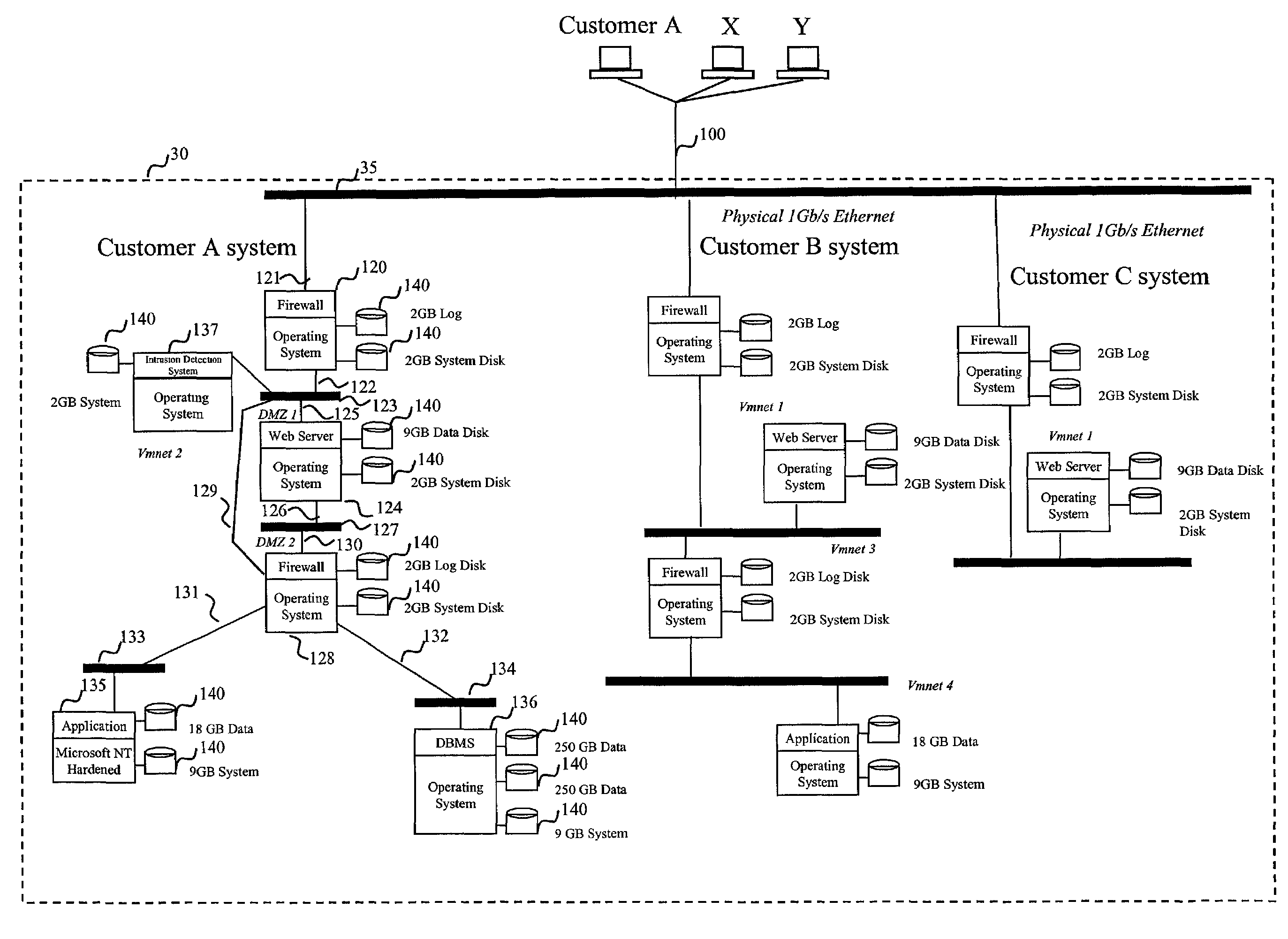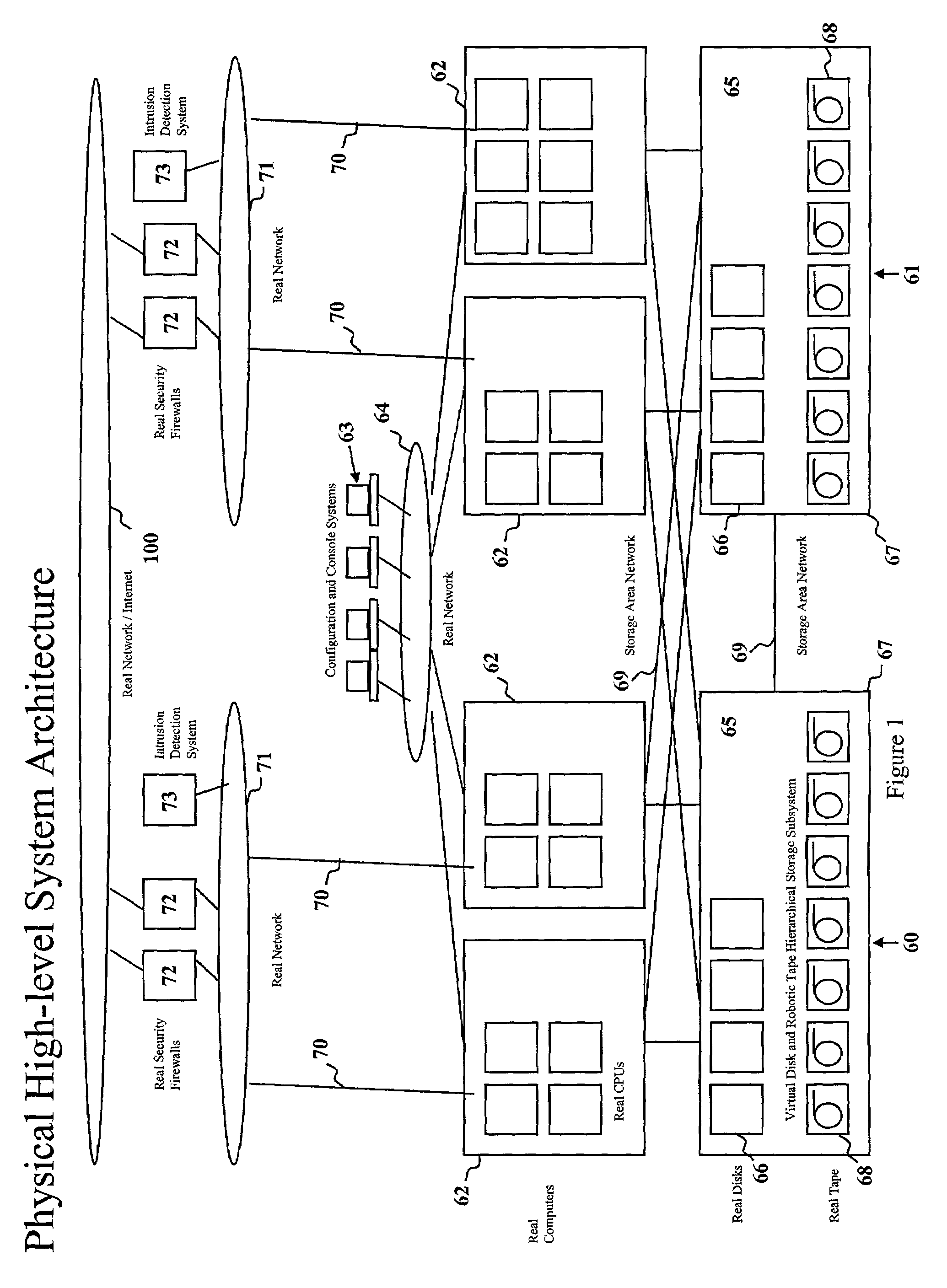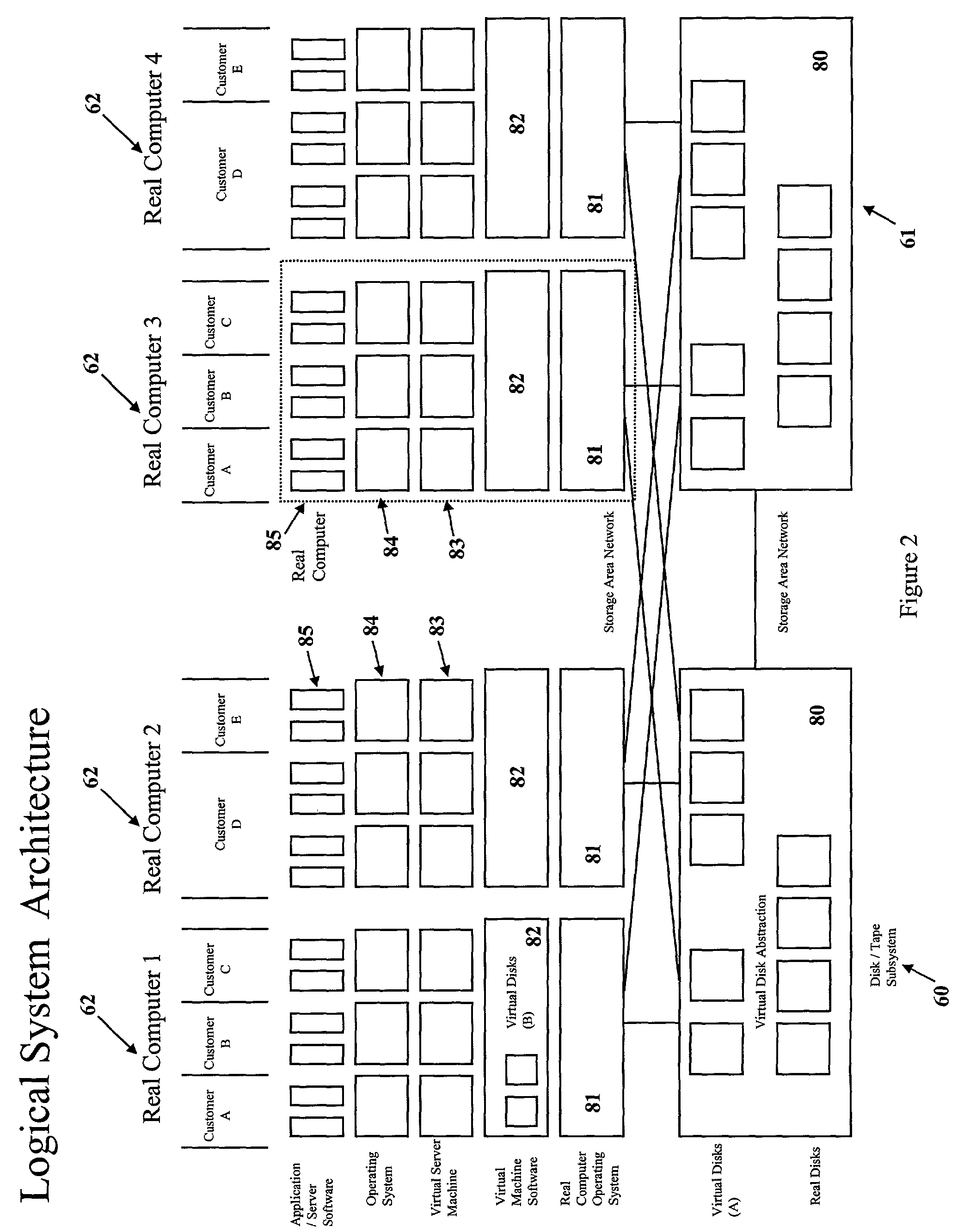As will be discussed in more detail below, the purchase of additional or new, upgraded
computer equipment brings numerous problems, including particularly the requirement for a significant capital outlay and for time to be spent in installing and setting up the new equipment.
In any event, the cost of maintaining
computer equipment can be significant, both in financial terms and in respect of the time spent in maintenance.
These smaller scale systems tend to proliferate in organisations, leading to the management difficulties described above.
Though mainframe-type computers may offer lower “
total cost of ownership” for certain applications, the industry trend of moving away from those architectures has meant that applications are simply not designed to run on them, and “
porting” the application is likely to be unacceptably disruptive, risky and costly.
Prior art techniques involved in complex Web hosting applications delivery across
the Internet or other external network involves construction of a complex array of dedicated
server hardware to provide
Web server, security firewall,
database server, applications server and various systems development, test and management server capabilities, at often high
capital cost and significant procurement and installation
lead time, and occupying significant amounts of floor space in hosting centres.
Individuals and commercial, non-commercial and government organisations currently make use of IT applications which run on desktop or server computer systems of limited computational performance.
For each of the services described above, the limitations and disadvantages of the current state of the art include the fact that procurement of additional capacity takes significant time to do (e.g. for ordering, configuration and installation); additional servers involve additional maintenance and operational support costs; extra capital expenditure is incurred; systems availability, reliability,
backup and management become more difficult and costly as the number of servers increases; start-up ventures require large amounts of capacity to get started, yet may be unwilling or unable to afford the large initial commitments and costs involved; joint ventures between organisations requiring shared
access to information and data require separate servers to be installed for security or operational reasons; server capacity is provisioned to provide acceptable service under
peak load or storage usage conditions, such that capacity is typically over-provisioned for unnecessary cost; temporary
business requirements necessitate procurement of temporary servers and capacity, often involving procurement of equipment and systems which might not be needed beyond the temporary requirement; smaller and medium sized servers are unable to take
advantage of more sophisticated high-availability technology or technologies which enable more efficient use of secondary disk and tape storage; consolidation of services onto a larger server computer is made difficult because of the need to justify to management the capital procurement costs of a large
system together with the need for specialist resources needed to maintain and support it effectively; additional intrusion detection systems running on separate hardware often needs to be added in high-security applications to detect attacks; prototype of development and test systems need to be separately provisioned, with additional hardware cost and
system management implications; and, provision of
backup facilities for
disaster recovery purposes often involves the procurement of similar or identical hardware and
software systems and configuring them ready to run services if main systems fail, resulting in increased complexity and cost.
 Login to View More
Login to View More  Login to View More
Login to View More 


